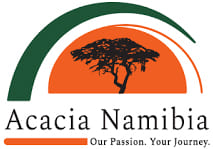Travel Information
Here is some useful travel information when planning your holiday in Namibia.

Immigration / Visa
Visitors from abroad will need a passport which must be valid for at least 6 months, after the end of their trip. Tourists from Germany, Switzerland, Austria and Holland, among others, do not require visas, provided you are in possession of a valid within 90 days of arrival flight tickets for onward or return journey. The 90-day policy applies per year and it is not possible to extend the stay by a short trip over the border to more than 90 days. Since these provisions can change again and again, we ask the passengers to get information before starting the journey at their Foreign Office.

Climate / clothing
Namibia has a very pleasant climate for Europeans. The hottest months fall within the European winter. November to January is summer. From May to August is winter. During the day, the temperature is usually between 20 to 25 degrees Celsius with blue skies. Early in the morning, evening and at night, it may get very cool. Be prepared with the right clothing choices. The sun burns in both summer and winter, so wearing a hat is important.
The following should always be in your luggage:
Sunscreen with a high sun protection factor
Sunglasses
Sandals
Swimwear

Disease Prevention
To travel to Namibia no vaccinations are required at the time. Malaria prophylaxis is recommended. All persons entering the country to Namibia must proof of their property of medications by invoices / receipts, otherwise there is a danger that they will be confiscated at the border.

Currency
1 Euro is about 20 Namibian Dollars. The Namibian Dollar (N$) is bond to the South African Rand (ZAR).
1 Rand = 100 cents = N$1
An unlimited amount of Euros can be brought into the country, as along as it is for personal use. However bringing in Namibian Dollars (N$) is limited to N$500, thus it is advised to exchange your currency as soon as you arrive in Namibia.

Power Grid
220/240 volts. The sockets are three pin adapter and can be bought here at any electronics shop or in large supermarkets. The power grid is originally South African, so South African adapters can be purchased.

Driver's License
If you plan to drive yourself during your stay in Namibia, the drivers must carry an International Driving Permit in addition to the driving license from their respective country. In Namibia we drive on the left side of the road and animals do roam here freely, thus higher speeds should be avoided especially on gravel and salt roads. Accident rates in Namibia are rather high, this can be seen at the high charges from car rental companies for insurance.
During the rainy season the otherwise dry rivers can fill up rather quickly with water, and make many roads impassable. If you are planning on traveling through remote areas, you should take every opportunity to refuel. Don’t forget to replenish your water supply again. This is very important.
